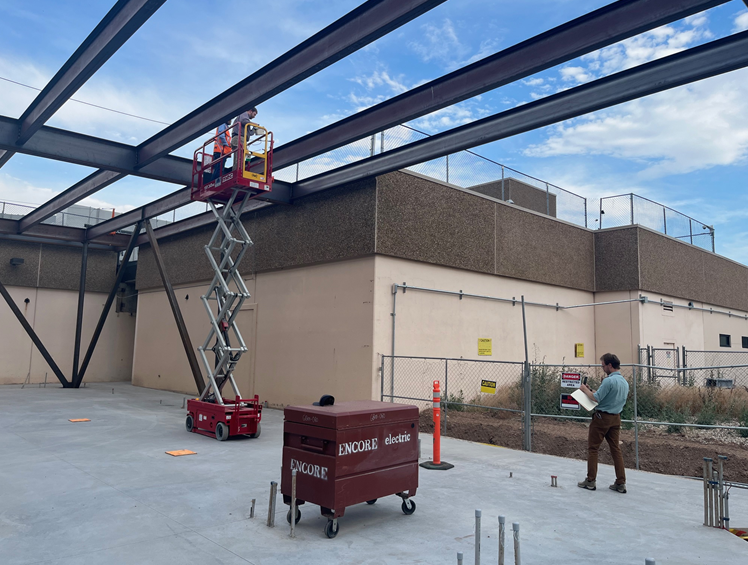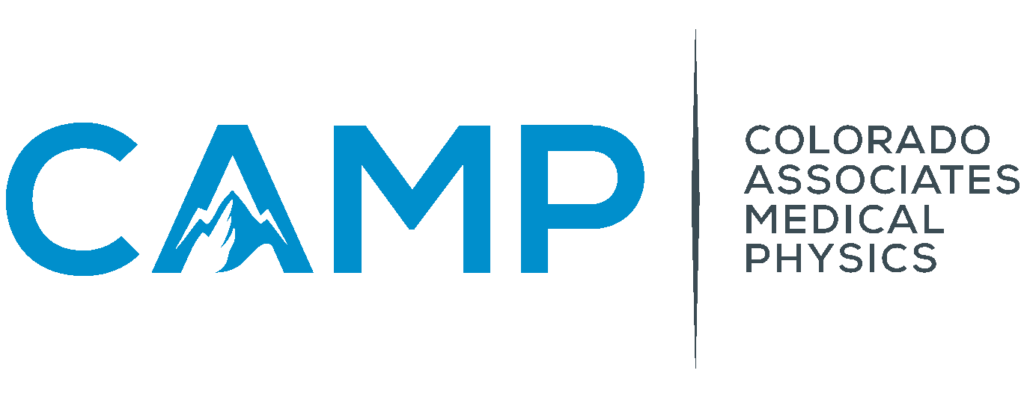Shielding in Medical Imaging and Treatment: Comprehensive Strategies and Future Trends in Medical Physics
Introduction: Why Shielding Is Essential in Medical Imaging and Treatment
In the world of medical physics, shielding isn’t just important—it’s essential. The goal of shielding is to keep patients, healthcare workers, and visitors safe from ionizing radiation while maintaining efficient imaging and treatment operations that are essential to patient care. As technologies evolve, so do shielding strategies, requiring continuous innovation and precise design. Medical physicists are tasked with balancing safety, efficiency, and compliance to protect everyone involved. Whether it’s a radiation therapy suite or a PET imaging lab, these experts ensure shielding solutions are tailored to meet specific needs while following regulatory standards.
This article dives into the different types of shielding, key design considerations, and the latest trends shaping the future of radiation safety. We sit down with Kiernan McCullough and Stephanie Franz to discuss.

Types and Applications of Shielding in Medical Physics
Shielding solutions aren’t one-size-fits-all—they must be tailored to the type of equipment, energy levels, and environment. Below are the most common types and their applications.
1. Structural Shielding
Structural shielding is one of the most critical elements in radiation safety. It involves using high-density materials—such as lead, concrete, or specialized drywall—that are integrated into the walls, ceilings, and floors of medical facilities to prevent the spread of ionizing radiation. These barriers are carefully designed to contain both primary and scattered radiation, ensuring that radiation exposure meets regulatory limits for adjacent areas, is limited to specific areas and does not leak into surrounding rooms or public spaces. In medical facilities where X-ray, fluoroscopy, PET, or radiation therapy equipment is used regularly, structural shielding is not just recommended—it’s required by state and federal safety regulations.
- Primary Radiation: The direct beam emitted from X-ray or radiation therapy equipment. This beam is aimed at a specific target area, such as a patient’s body during a diagnostic scan or tumor treatment. Because the energy of primary radiation is high, any room that houses imaging or therapy equipment needs robust shielding to attenuate, absorb or block this direct beam.
- Scattered Radiation: Even with primary beams carefully directed at their intended targets, scattered radiation can occur as the radiation interacts with surfaces like walls, equipment, or the patient’s body. This scattered radiation can travel in multiple directions, creating a lower-energy but still hazardous radiation field. Scattered radiation is a particular concern in therapy treatment rooms, where high-energy beams interact with multiple surfaces.
“The goal is to keep radiation exposure within regulatory limits,” says Stephanie, a medical physicist. “Whether we’re working in diagnostic imaging or radiation therapy, structural shielding ensures the safety of everyone outside the room.”

2. Personal Protective Equipment (PPE)
In environments where occupational exposure to radiation is a part of daily operations, healthcare workers rely heavily on personal protective equipment (PPE) to minimize their exposure and ensure safety. PPE serves as a portable barrier, shielding individuals during diagnostic and therapeutic procedures where maintaining physical distance from radiation sources is not always feasible. This is especially critical in fluoroscopy rooms or interventional radiology, where healthcare staff often need to be in close proximity to the patient and imaging equipment while the radiation beam is active.
The most common forms of PPE include lead aprons, thyroid collars, and lead glasses, which protect specific parts of the body from radiation. These devices are not only essential for the safety of medical staff but also serve to meet a regulatory requirement in procedures that generate significant scatter radiation.
- Radiation Badges: In addition to wearing PPE, healthcare workers use radiation monitoring badges to track their cumulative exposure to ionizing radiation over time. These badges provide data that helps ensure occupational exposure stays within regulatory safety limits, typically measured over a specific period (e.g., monthly or quarterly).

“Badges help me to be aware of what’s going on with radiation exposure in areas or to individuals so that problems can be identified and corrective measures taken,” Stephanie explains. “They allow us to monitor exposure levels and comply with safety standards.”
- Mobile Shielding Devices: Mobile lead barriers offer flexibility, especially in X-ray and CT rooms. These shields can be moved around to provide protection for staff and patients during imaging procedures.
“These movable shields are useful during procedures,” Stephanie notes. “They give us the flexibility to place them exactly where we need them, without disrupting the workflow.”
Key Considerations for Shielding Design
Designing effective shielding solutions requires careful planning and precision. Medical physicists must evaluate several factors to ensure radiation exposure remains within safe limits for both staff and the public. This involves balancing regulatory compliance, room usage patterns, and equipment-specific needs. Each healthcare facility has unique requirements, and shielding designs must reflect both the type of equipment used and the frequency of procedures performed. The goal is to ensure everyone—patients, staff, and visitors—stays protected without compromising operational efficiency.
1. Regulatory Compliance and Safety Standards
Medical physicists rely on guidance from organizations like the ICRP (International Commission on Radiological Protection) and NCRP (National Council on Radiation Protection and Measurements) to help adhere to standards put in place by both state and federal mandates. These guidance documents help medical physicists ensure radiation exposure stays within safe limits.
- Controlled Areas: Spaces where radiation exposure is expected (e.g., x-ray imaging rooms).
- Public Areas: Places like offices or waiting rooms, where strict radiation limits are enforced.
“We separate areas into controlled and public spaces,” Stephanie explains. “Public areas, like offices, have much lower exposure limits to ensure visitors and non-radiation staff remain safe.”
2. Room Layout and Usage Patterns
Spaces where radiation exposure is expected, such as CT or x-ray imaging rooms, radiation therapy suites, or fluoroscopy labs. In these areas, healthcare workers are trained to safely manage radiation exposure, and the shielding design is optimized to minimize their risk.
“If an imaging room shares a wall with a busy office, we need more shielding than if it’s next to a bathroom that’s rarely used,” Stephanie notes. “We always evaluate the surrounding layout to ensure we meet safety standards.”
3. Equipment-Specific Requirements
Different types of imaging equipment generate different levels and types of radiation, requiring tailored shielding strategies. Some modalities emit high-energy beams that penetrate deeper into walls, while others primarily generate scattered radiation that must be managed with targeted shielding.
- X-ray and Fluoroscopy Rooms: These rooms must be shielded to contain both primary and scattered radiation. Primary radiation refers to the direct X-ray beam, while scattered radiation is produced when the beam bounces off the patient or equipment. Lead-lined walls or high-density drywall are commonly used to absorb scattered radiation.
- PET (Positron Emission Tomography) presents unique challenges because patients themselves emit radiation after being injected with radionuclides. This means that uptake rooms—where patients wait for the tracer to distribute through their body—require thicker shielding, especially if they are near frequently occupied areas.
“PET imaging is more complex,” Stephanie explains. “Since patients themselves become radiation sources, we need extra protection in spaces adjacent to uptake and imaging rooms.”
Evolving Trends in Shielding for Medical Imaging
As imaging technology advances, shielding techniques are evolving to keep up with the demands of modern healthcare.
1. Impact of Technological Advancements
The rapid advancement of imaging technology is changing how shielding is designed.
“Today’s CT scanners can image entire bodies in seconds,” Stephanie says. “While that increases workload, improvements in imaging have allowed us to reduce radiation doses and also reduce for each exam”
PET imaging, once rare, is now more common, creating a growing need for complex shielding solutions.
2. Veterinary Imaging: A Niche but Expanding Field
Veterinary facilities also require custom shielding designs based on the size and type of animals being treated.
“Small animal imaging requires simpler shielding because the beams are usually directed downward,” Stephanie notes. “But large animal facilities, like those for horses, pose unique challenges.”
One example comes from CSU’s veterinary school, where a horse brought into the movable gantry with a ceiling mounted system required a redesign to ensure the X-ray scatter was correctly determined for adjacent spaces.
Real-World Challenges in Shielding Design
Designing shielding solutions isn’t without challenges. Retrofitting older rooms for new equipment or managing construction constraints can introduce unexpected complications.
“When we replace older machines with higher-energy equipment, rooms can become under-shielded,” explains Kiernan McCullough, another medical physicist. “In one case, we had to use a cherry picker to measure exposure conditions from sky-shine (scatter from the atmosphere when the beam is pointed upward) after installing higher-energy equipment—it’s not something that translates well from the textbook.”
Collaborating with architects and construction teams is also essential to prevent shielding breaches.
“Even small errors, like drilling through a shielded wall, can create radiation leaks,” Kiernan warns. “That’s why we work closely with construction crews to avoid costly mistakes.”
Skyshine is a critical consideration and challenge to tackle in medical physics and shielding design for radiation therapy facilities. This phenomenon occurs when radiation escapes upwards, scattering into the atmosphere, and then reflects back down, potentially increasing radiation doses in areas outside the intended treatment zones. Proper shielding design is essential to mitigate skyshine, ensuring safety for patients, staff, and nearby environments.
These images illustrate this complex process in action during the construction of a radiation therapy facility at the CSU Veterinary Clinic. In the first photo, a medical physicist is positioned in a cherry picker, assessing and planning for structural elements that contribute to minimizing radiation leakage. The second image shows a physicist on the ground taking radiation measurements, a vital step in determining the effectiveness of shielding designs to address skyshine and other radiation safety challenges.


The Future of Shielding: Balancing Safety and Efficiency
As imaging technology continues to evolve, shielding strategies must adapt. Medical physicists need to stay ahead of the latest developments to ensure safety without disrupting clinical operations.
“Whether we’re working in a busy CT suite or a veterinary clinic, the principles remain the same,” Stephanie emphasizes. “Shielding solutions must be tailored to fit the equipment, workload, and environment to maintain both safety and efficiency.”
In the future, innovations like self-shielded machines could reduce the need for external barriers, streamlining shielding requirements even further.
Final Thoughts: The Critical Role of Shielding in Medical Physics
Shielding will always be a cornerstone of radiation safety, ensuring that patients, healthcare staff, and the public are protected across a wide range of medical and veterinary applications. As imaging technologies and radiation therapies evolve, so must shielding strategies—balancing safety, efficiency, and compliance. With medical physicists at the forefront, these solutions require not only precise calculations but also collaboration across disciplines to meet regulatory standards and minimize risks.
Looking ahead, the demand for expertise and adaptability will only grow, as facilities adopt new technologies and face evolving challenges in shielding design. Whether retrofitting rooms for modern equipment or developing tailored solutions for veterinary clinics, shielding will remain central to creating safe environments without disrupting care. In every project, safety will always come first, with teamwork ensuring that no detail is overlooked and every individual remains protected.
“Every shielding project is a collaboration,” Kiernan says. “It takes multiple experts to get it right, and the consequences of mistakes can be severe.”
Connect with CAMP
Looking to connect with Kiernan or Stephanie? Send us a message on LinkedIn.
Want to learn more about medical physics, nuclear medicine support, and the latest advancements? CAMP offers a wealth of resources and expertise to help you stay informed and engaged in this dynamic field. Whether you’re a healthcare professional, student, or simply curious about the science behind radiation imaging & therapy, CAMP is here to support your journey.
Visit our website to explore our services, discover educational opportunities, and join a community dedicated to advancing medical physics.
